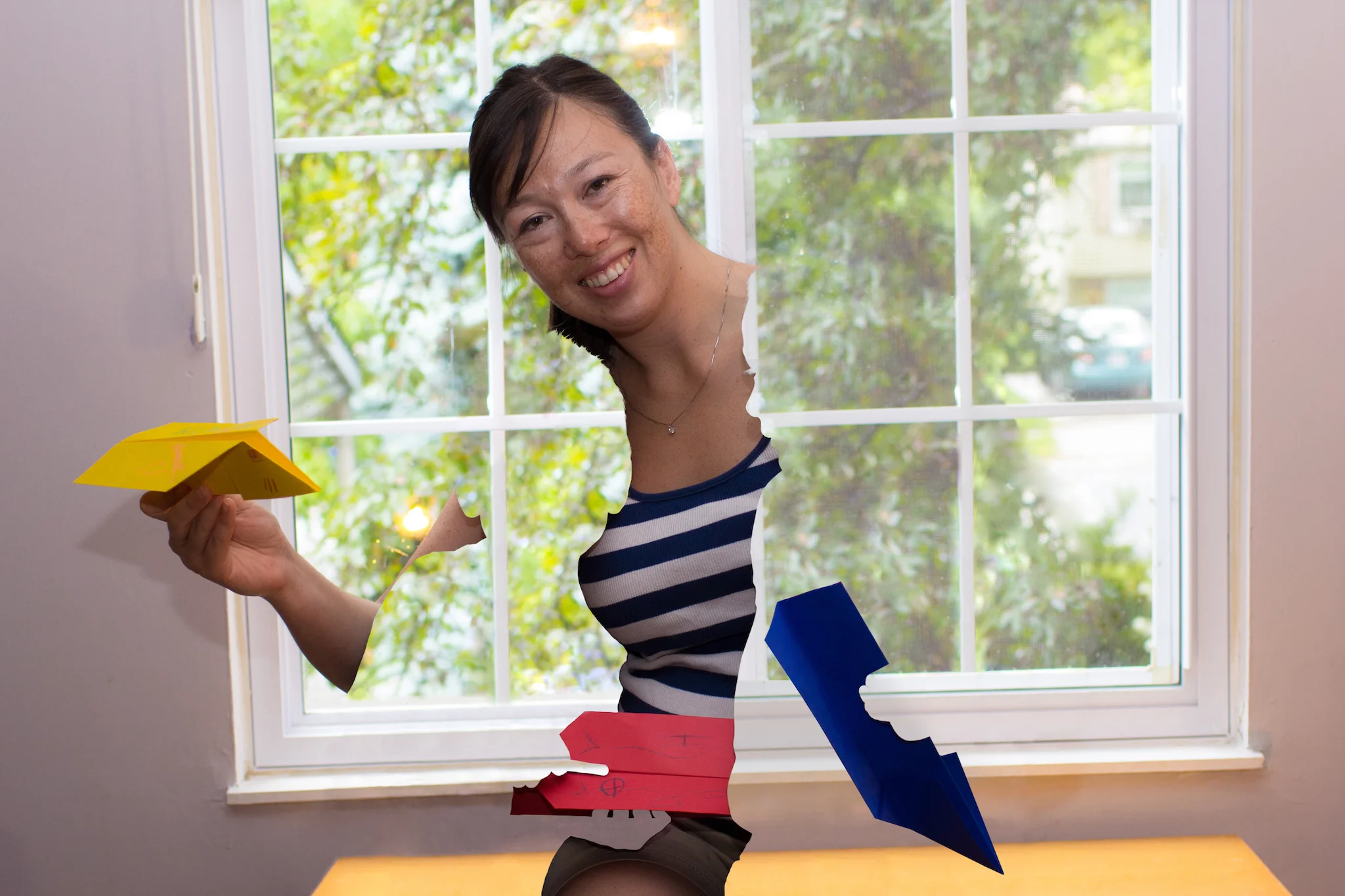Obsession was the theme of Thursday, Sept. 28 as Associate Professor Sarah Sweeney and German artist Joachim Schmid sat down to discuss their extensive found-photographs collectives. The two artists have taken on the concentrated culture of documenting every moment in posed, artificial ways that parody true memories.
Their works revolve around collected and found images -- for Schmid, he has spent years cultivating photos from flea markets, while Sweeney has followed the life of a Flickr user, Erica, over the past year -- andbrings into question what it means to “capture” an individual moment.
“[After many years] I looked at snapshot photograph and discovered that basically every family has the same photos,” said Schmid. His project from 1986-1999 is titled Archiv, and brings attention to the innate patterns of familial photography. During the artist interview, Schmid brought up the age-old example of when someone gets a new car: the photo is taken by the husband or partner, and each time features a woman with her right hand placed lovingly atop the hood.
(photo from Joachim Schmid's collective)
Both Schmid and Sarah concentrate on how moments are translated into physical representations, and the ownership that comes with having shot it into existence. As well as what it means to distort and reimagine their importance.
This is represented prominently in Sweeney’s work, where she has taken the life of a stranger and erased all other people from the photos. What remains are silhouetted hands, a ghost presence of the moment -- no longer permanent against time.
Sweeney commented that throughout the project, she wanted to learn “Who is Erica? What does she look like when she’s all alone? What parts of her are missing? Who is she when she is alone? This work is about how much of our bodies we give to others.”
(photo from Professor Sarah Sweeney's project)
Ultimately, both artists are making statements on the fleeting nature of moments and our need, as consumers, to cement that feeling, atmosphere, backdrop, in a digital form. However, both claim that in doing so, we lose what made that moment special in the first place.
“If you have on snapshot, it’s not that interesting. If you have a thousand, you see nothing but pattern,” explained Schmid.
There is no individuality in our documentations. Whether noticeable or not, every time we purposely capture a moment, we are doing it because we’ve been influenced by the plethora of examples found at flea markets, thrift stores, or family photo albums. Certain events are groomed to become memorial.
The other important take away from both projects is the complexity of originality in creative works. Both artists use found photographs where neither had any hand in the genesis of the images. Is this plagiarizing?
According to both artists, there is something that happens when the photos find their way into new hands. A transformation takes place as new meaning and importance transcends the digitally captured individuals. The act of bringing these separate moments and lives together for greater identification brings new life and stories, it connects patterns and creates a collective completely individual of whatever their immediate contraception was.
Surprisingly enough, neither Sweeney nor Schmid held much emphasis in photography, and actually encouraged listeners to delete their camera rolls. There were murmurs of shock throughout the crowd, based on the nature of not only social media, but human desire. Mothers without photos of their kids, families with only memories to recall vacations.
Critically speaking, there is no originality in even our most personal images, but who is to say that is reason enough to halt preserving our fleeting ages and momentary smiles. The artists’ philosophies beg consumers to at least consciously address documentation in digital form.

